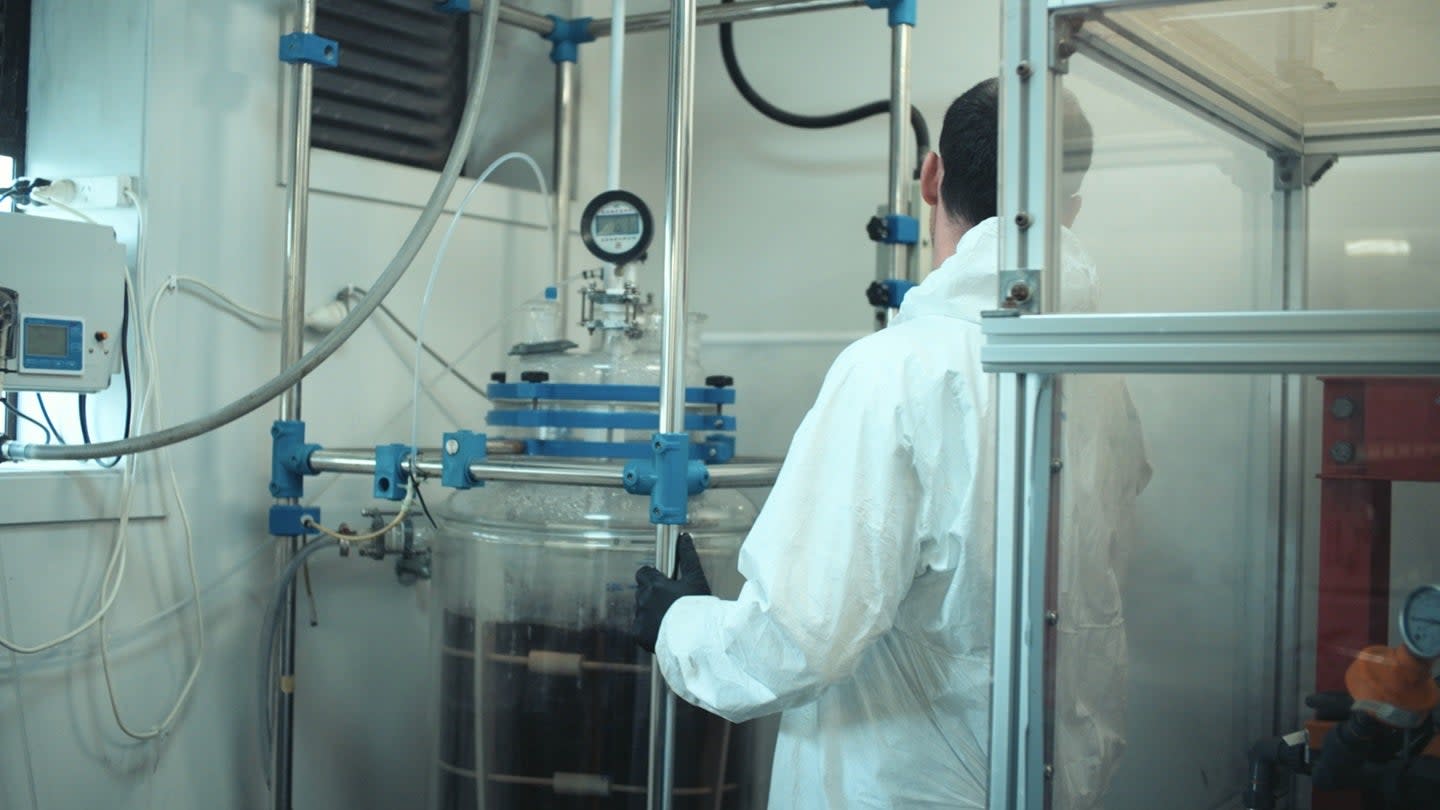Better Artificial Intelligence (AI) Stock: CoreWeave vs. Nvidia

Key Points
-
The growing demand for AI computing power has propelled both CoreWeave and Nvidia's businesses to new heights.
-
Nvidia anticipates a growing need for AI factories to deliver processing power for AI at scale.
-
CoreWeave's revenue rose 420% year over year in the first quarter, driven by insatiable customer demand for AI infrastructure.
-
10 stocks we like better than CoreWeave ›
The advent of commercially available artificial intelligence (AI) systems has brought with it a growing need for prodigious computing power. Newcomer CoreWeave (NASDAQ: CRWV), which had its initial public offering on March 28, stepped up to help meet that need.
The company delivers state-of-the-art cloud infrastructure designed to support AI systems. To do this, CoreWeave relies on tech provided by Nvidia (NASDAQ: NVDA). Nvidia's graphics processing units (GPUs) and other AI products position it to power the next wave of technological innovation.
As Nvidia CEO Jensen Huang stated, "We are entering a new industrial era -- one defined by the ability to generate intelligence at scale." Against this backdrop, which stock offers a better long-term investment opportunity from here: CoreWeave or Nvidia?
Nvidia and the rise of AI factories
The new industrial era described by Jensen Huang will require AI factories -- specialized data centers outfitted with cutting-edge hardware designed to support the computing power demands of AI systems.
For this reason, organizations seeking to lead in the AI space are constructing new data centers. Meta Platforms, for example, is building one in Louisiana that CEO Mark Zuckerberg described as "so large it would cover a significant part of Manhattan." Oracle is working on a data center so big, three small modular nuclear reactors will be needed to power it.
As a provider of key hardware -- in particular, its GPUs -- Nvidia stands to benefit from the construction and operation of these AI factories. Sales of chips that use its latest GPU architecture, Blackwell, remain strong, and the company is already preparing to release Blackwell's successor, the Vera Rubin architecture, next year.
Its ability to steadily advance its technology has catapulted Nvidia's sales to historic highs. In its fiscal 2025 (which ended Jan. 26), revenue grew 114% to a record $130.5 billion.
Fiscal 2026 is off to a strong start with first quarter revenue of $44.1 billion, a 69% increase from the prior-year period, while operating income rose 28% to $21.6 billion. Nvidia expects continued sales growth in fiscal Q2, projecting $45 billion in revenue, up from $30 billion in the prior-year period.
Story continuesThis growth came in spite of a reduction in Nvidia's sales to China due to U.S. government restrictions on what AI hardware can be sold to customers there. In hopes of reigniting its business in China, Nvidia is working on a chip that would be acceptable to export there under the new regulations. This new chip could launch in the fall.
A look into CoreWeave
The need for AI factories is giving CoreWeave's business a serious boost. Demand for computing power is so large, the likes of Meta, ChatGPT owner OpenAI, and Microsoft are using CoreWeave's cloud infrastructure to supplement their own data centers. This helped CoreWeave drive to $981.6 million in the first quarter, an astounding 420% year-over-year increase.
The company is seeing no slackening in client demand, despite the uncertainty of how businesses might adjust their IT spending in light of President Donald Trump's ever-shifting tariff policies. CoreWeave management is guiding for sales to accelerate to $1.1 billion in Q2, up from $395 million in the prior-year period.
CoreWeave also announced this month that it will acquire Core Scientific, a digital asset mining company. Before the AI revolution took off, CoreWeave was also involved in cryptocurrency mining. But this acquisition isn't a return to its roots.
Instead, CoreWeave will use Core Scientific's IT infrastructure to expand its capacity so it can take on more customers who need AI computing power. The move will also reduce CoreWeave costs because it is currently renting some of Core Scientific's facilities.
Cost cutting is a necessity, since building out cutting-edge computing infrastructure is not cheap. In Q1, CoreWeave delivered an operating loss of $27.5 million as its operating expenses ballooned by 487% to $1 billion.
Deciding between CoreWeave and Nvidia stocks
Another crucial consideration as you weigh investing in either CoreWeave or Nvidia is their valuations. Because only one of them is profitable, the price-to-sales (P/S) ratio is a useful metric for comparing them, and also for gauging them against other AI businesses such as Microsoft and Nvidia competitor AMD.
Both companies' P/S ratios climbed in recent months, and are far above Microsoft and AMD. This suggests both stocks are pricey even though CoreWeave's P/S multiple dipped in July.
Consequently, I would say it would be better to wait for shares to trade at a more reasonable valuation before picking up either stock. However, when that opportunity arises, the company to choose is Nvidia.
The reason to pick Nvidia over CoreWeave is that the former is profitable, a key player in AI industry growth, is continually improving its technology, and has a wide competitive moat. By contrast, CoreWeave's business model can be replicated by many competitors, and some of its customers may discontinue using the company's services once they've built out enough data centers of their own.
As a result, Nvidia looks like the superior long-term investment between these two AI businesses.
Should you invest $1,000 in CoreWeave right now?
Before you buy stock in CoreWeave, consider this:
The Motley Fool Stock Advisor analyst team just identified what they believe are the 10 best stocks for investors to buy now… and CoreWeave wasn’t one of them. The 10 stocks that made the cut could produce monster returns in the coming years.
Consider when Netflix made this list on December 17, 2004... if you invested $1,000 at the time of our recommendation, you’d have $687,149!* Or when Nvidia made this list on April 15, 2005... if you invested $1,000 at the time of our recommendation, you’d have $1,060,406!*
Now, it’s worth noting Stock Advisor’s total average return is 1,069% — a market-crushing outperformance compared to 180% for the S&P 500. Don’t miss out on the latest top 10 list, available when you join Stock Advisor.
See the 10 stocks »
*Stock Advisor returns as of July 15, 2025
Randi Zuckerberg, a former director of market development and spokeswoman for Facebook and sister to Meta Platforms CEO Mark Zuckerberg, is a member of The Motley Fool's board of directors. Robert Izquierdo has positions in Advanced Micro Devices, Meta Platforms, Microsoft, Nvidia, and Oracle. The Motley Fool has positions in and recommends Advanced Micro Devices, Meta Platforms, Microsoft, Nvidia, and Oracle. The Motley Fool recommends the following options: long January 2026 $395 calls on Microsoft and short January 2026 $405 calls on Microsoft. The Motley Fool has a disclosure policy.
Better Artificial Intelligence (AI) Stock: CoreWeave vs. Nvidia was originally published by The Motley Fool














